The Best Closed Terrarium Plants (With Names and Pictures)
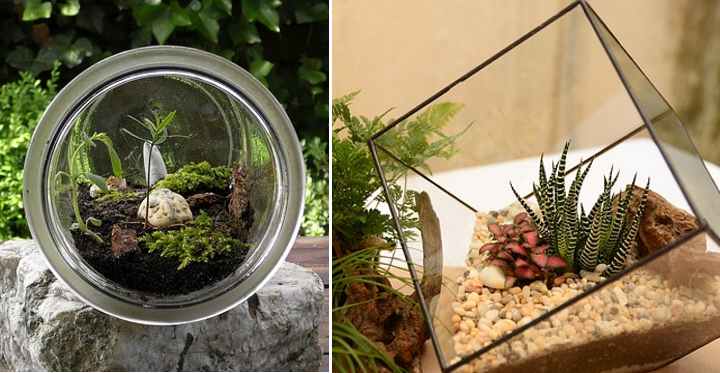
Closed terrariums are an excellent way to bring some of the tropics into your home. These closed glass enclosures are perfect for growing small plants that require warm, humid, and low-light environments. Plants growing in the eco-system of a closed glass container seem to look after themselves. So, there is very little to do if you want to care for miniature plants in a sealed terrarium.
What type of plants are suited to a closed terrarium? These 10 plants are ideal for growing in a closed terrarium:
- Polka dot plants
- Miniature ferns and mosses
- Peperomia
- Mini spider plants
- Nerve plants
- Miniature English ivy
- Golden pothos
- Venus flytraps
- Miniature orchids
- Pilea
In this article, you can find out about these and more plants that are perfect for growing in sealed terrariums.
Types of Plants Suited to a Closed Terrarium
The best type of plants to grow in a closed terrarium are ones that thrive in high humidity and warm temperatures. For this reason, it’s best not to grow succulents or cacti as they need drier conditions.
Choose plants that are small and petite and are suitable for the size of the glass jar you plan to use. The terrarium plants you pick should have similar care requirements when it comes to light, humidity, and water. Small tropical plants are excellent for sealed glass containers as the environment is similar to their native habitat.
The mini plants in a sealed terrarium get their moisture from evaporation. The lid on the glass jar prevents vapor from escaping. This condenses on the glass and drips back into the potting mix. The constant supply of moisture and humid conditions create a perfect natural environment for terrarium plants.
How to Care for a Closed Terrarium
Keep a sealed terrarium away from direct sunlight. Soil should be moist, and it’s normal if there’s some moisture on the glass. Terrarium plants rarely need watering. If you need to add water, only add small amounts at a time. If the humidity in your glass terrarium is too high, leave the container open for a day.
The Best Plants for a Closed Terrarium
Let’s look at the best plants for closed terrariums. In this list, you will find over 20 plant species suitable for growing in glass containers. Along with descriptions and their scientific names, pictures of terrarium plants will help you choose the best ones.
Polka Dot Plants (Hypoestes phyllostachya)
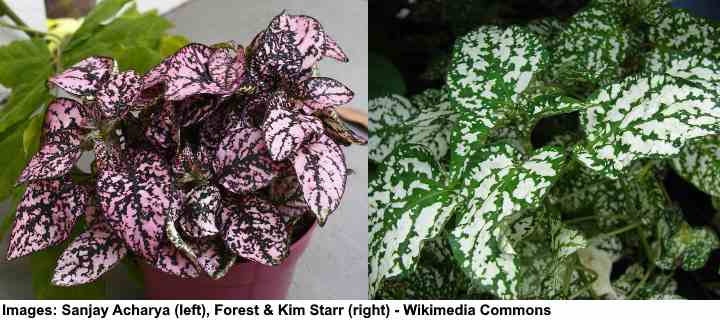
Polka dot plants are excellent for enclosed terrariums because they add color, thrive in humidity, and don’t grow tall. These tropical plants have variegated leaves with pink, white, or red blotches. To look after polka dots, you may have to prune them to prevent the stems from becoming leggy.
In tropical climates, these little colorful plants grow as perennials. Humidity and moist soil help keep the leaves looking healthy and vibrant. Also, the lower light of the terrarium prevents the plants from growing too vigorously.
The names of cultivars give an indication of their leaf color. For example, ‘Pink Splash,’ ‘Confetti Blush,’ ‘Camina,’ and ‘White Splash’ are polka dot plants that brighten up glass terrariums.
Nerve Plants (Fittonia albivenis)
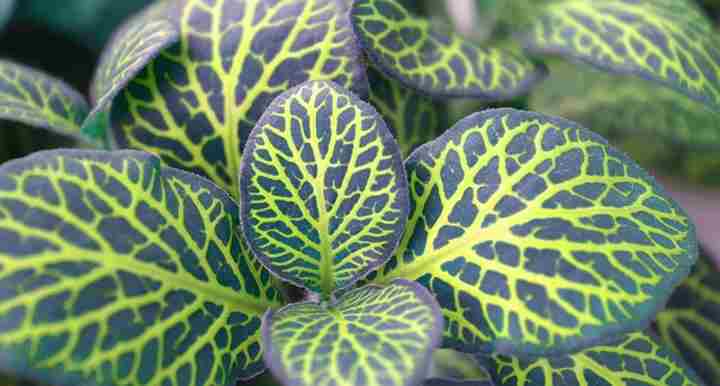
The colorful leaves of nerve plants enliven sealed terrariums where moisture and humidity are abundant. These evergreen perennial tropical plants have dark leaves with brightly-colored veins. Nerve plants are excellent for terrariums because they only grow to 6” (10 cm) tall and have dense compact foliage.
The reason why nerve plants are well suited to terrariums is that they thrive in low-light and need moist conditions. You can also choose leaf colors to complement other plants in your closed terrarium. Nerve plants can have a creamy-white, deep red, pink, or lime-green coloring.
When looking for these terrarium plants, remember that they are also called mosaic plants, fittonias, and painted-leaf plants.
Miniature Ferns (Polypodiopsida)
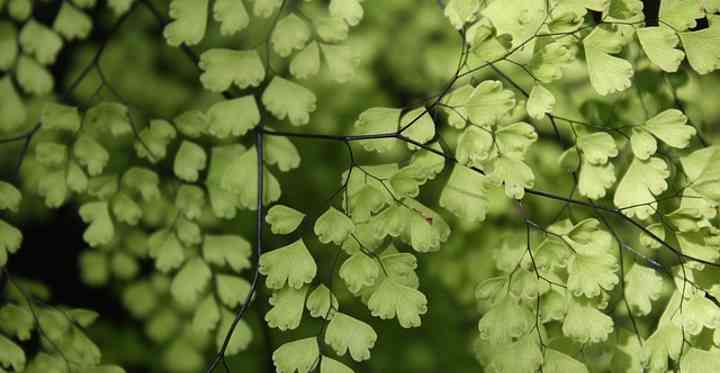
In the picture: maidenhair fern
Miniatures ferns are ideal for closed terrariums because they enjoy low-light, humid, and warm environments. Some types of ferns are well-suited for enclosed spaces because they are slow-growing and don’t reach more than 12” (30 cm). Occasional pruning will help keep your terrarium ferns to a manageable size.
Here are some species of ferns that grow well in enclosed terrarium environments:
Dwarf holly ferns (Cyrtomium falcatum)—This type of fern only reaches 12” (30 cm) at maturity and is slow-growing. It has arching, pinnate leaves that are a light green color. A perfect type of plant for a starter terrarium.
Lemon Button Fern (Nephrolepis Cordifolia)—Another excellent fern for sealed terrariums because it loves humidity and moist soil. Their natural habitat is shaded forests—ideal for indoor terrariums.
Maidenhair Fern (Adiantum Aethiopicum)—If your terrarium has high humidity and is in a warm room, then the Maidenhair fern is ideal. This plant is a small species of fern with small leaves and a spreading nature.
Pilea
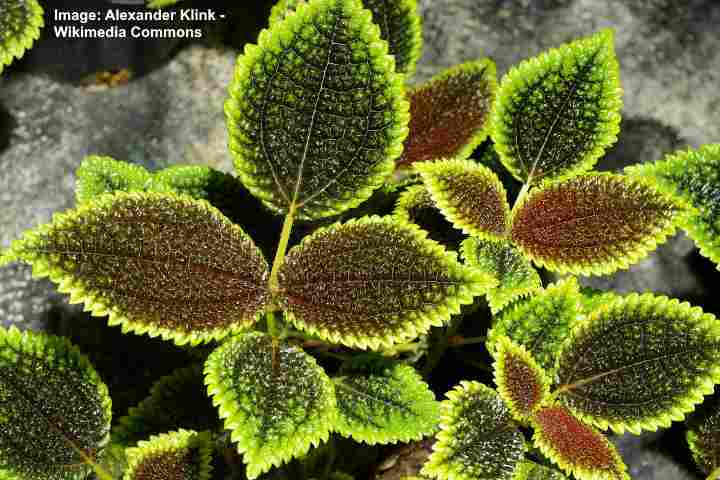
In the picture: Pilea involucrata
Pilea is a genus of tropical plant that grows well in closed terrariums because they need low to medium light, warm temperatures, and moist soil to thrive. Pilea plants are also easy to grow and require little care. Similar to other terrarium plants such as nerve plants and polka dot plants, pilea plants are prized for their foliage. With occasional pruning, you can enjoy this small plant in an enclosed glass container.
Some good choices of pilea for closed terrariums include the following:
Aluminum plant (P. cadierei)—This little leafy wonder has lush green leaves with variegated white markings. It is perfect for sealed, enclosed containers because it doesn’t grow more than 12” (30 cm), and growth is easily controlled by pruning.
Friendship plant (P. involucrata)—Also great for terrariums, this pilea is a bushy plant that must have humidity to survive.
Pilea Baby Tears (Pilea depressa)—Its small leaves, trailing nature, low height, and love for humidity make this type of pilea an excellent choice to provide lush foliage for your closed terrarium.
Artillery Ferns (P. microphylla)—This is not a fern but a low-growing tropical plant with succulent stems and leaves that are excellent for ground cover. Its miniature size makes it well-suited for glass terrariums with lids.
Peperomia
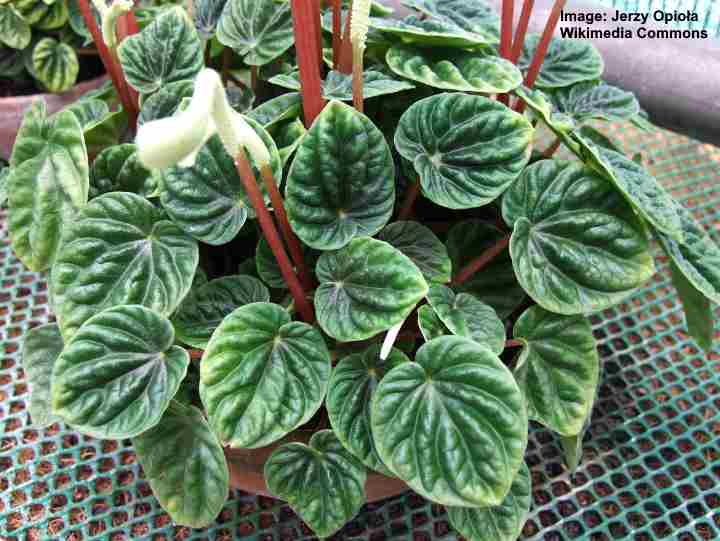
Peperomia caperata
Peperomia plants are popular choices for closed terrariums because they are compact, have beautiful foliage, and love warm, humid environments under glass—for example, terrariums and greenhouses. There are hundreds of species of peperomia plants to choose from. So, there is bound to be one to suit the enclosed humid environment of your terrarium.
The best examples of peperomias that look stunning growing in terrariums include:
Peperomia caperata—Its short height and love for humid environments make this peperomia suitable for closed terrariums. Its foliage is fleshy corrugated heart-shaped leaves.
Watermelon peperomia (P. argyreia)—High humidity requirements mean this peperomia is an excellent choice for terrariums. It also has oval leaves with patterns that look like watermelon skin.
Baby rubberplant (P. obtusifolia)—An easy to care for terrarium plant that has fleshy, shiny leaves and grows well in the moist atmosphere of a closed glass jar. Check out some variegated varieties of this peperomia.
Spider Plant (Chlorophytum comosum)

Spider plants are common houseplants that can brighten up a terrarium, and they are straightforward to care for. These ‘spiky’ plants adapt to several environments, and they can cope well in a terrarium.
If you want to add a spider plant to your terrarium collection, choose the C. comosum ‘Variegatum’ variety. This plant has dark green leaves with white edges and is one of the smaller species of spider plants.
Mosses

Mosses are perfect for the unique eco-system of an enclosed terrarium because they thrive in moist, low-light conditions where the air is continuously humid. All types of mosses provide excellent green groundcover and will continue to grow in the shade of other terrarium plants. Because moss grows along the ground, it won’t compete for height with other leafy plants.
Types of moss that perform well in bottle terrariums include cushion moss, sphagnum moss, and hair cap moss.
Creeping Fig (Ficus pumila)
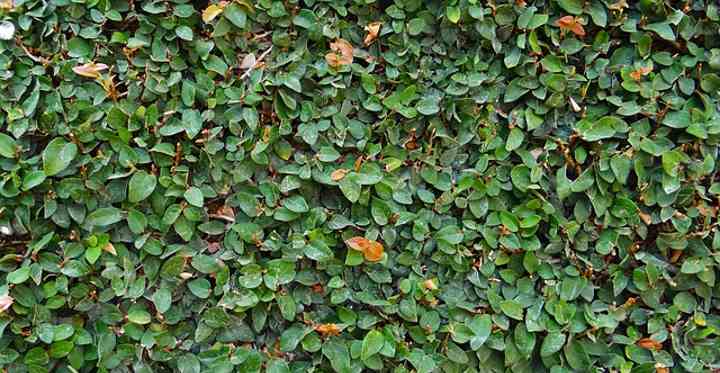
This creeping fig is ideal for enclosed terrariums because it loves warm, moist conditions and has small leaves. As its name suggests, this type of ficus has trailing stems that can also climb up the side of your glass container. The heart-shaped leaves have a glossy appearance and bumpy texture.
Spike Mosses (Selaginellas)
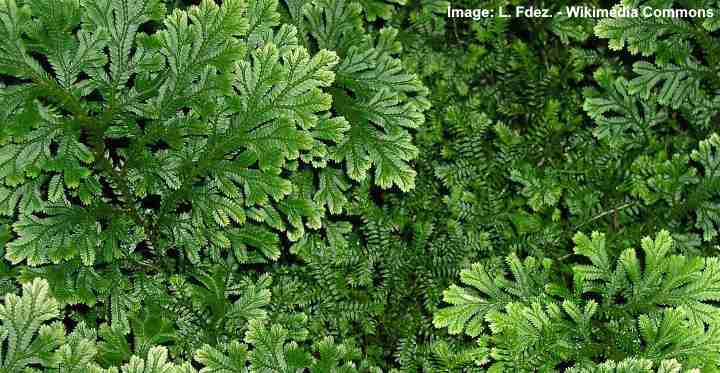
Spike moss grows along the ground, and the humid conditions in a closed terrarium are perfect for them to thrive. Although named a moss, this vascular plant is not a type of moss. The small leaves on spike mosses absorb moisture from the atmosphere. The low-growing plants have fern-like leaves that create a carpet of green in your enclosed jar. They also continue to grow well in the shade of other broad-leafed tropical terrarium plants.
Golden Clubmoss (Selaginella Kraussiana)—This type of club moss creates a beautiful light green mat of dense foliage in your terrarium. This plant needs so much humidity that it only grows successfully indoors in the moist environment of an enclosed container. This type of tropical plant grows to about 6” (15 cm) tall and has a spreading nature.
Golden Pothos (Epipremnum aureum)
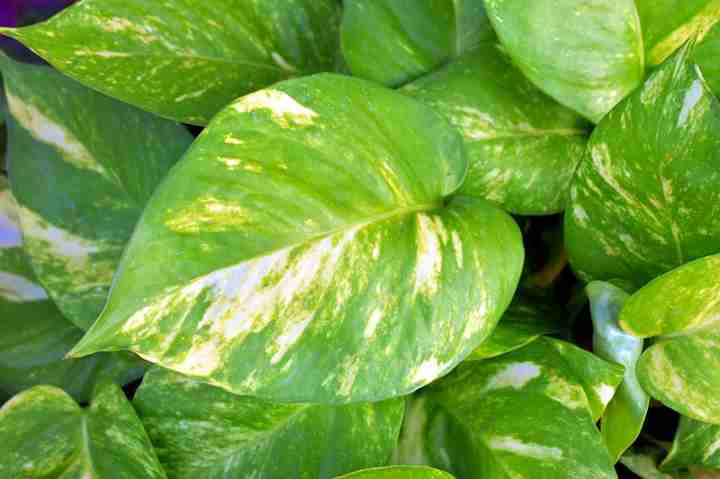
This vine plant, the golden pothos, is well suited to closed terrarium environments because it grows well in warmth and humidity and doesn’t mind being kept in the dark. The golden pothos likes to climb and is an excellent plant to provide height and colorful foliage in a glass terrarium bottle.
Also called devil’s ivy, golden pothos has bright variegated foliage due to its white, yellow, or pale green leaves. These are vigorous growers, and you will have to prune them to keep them in check.
Baby’s Tears (Soleirolia soleirolii)
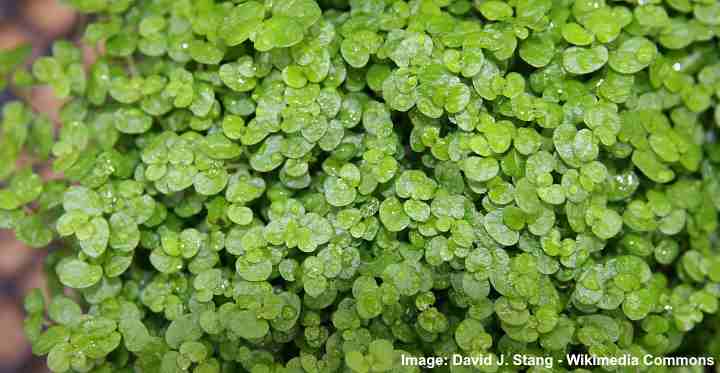
‘Baby’s tears’ grows in warm, humid environments, making them ideal for indoor closed terrariums. Not to be confused with a species of pilea, these ground creeping plants grow alongside ferns and mosses. They grow as a bright green mat on the floor of your terrarium. The small, delicate green leaves help to brighten up an indoor ornamental tropical garden.
Earth Star (Cryptanthus)
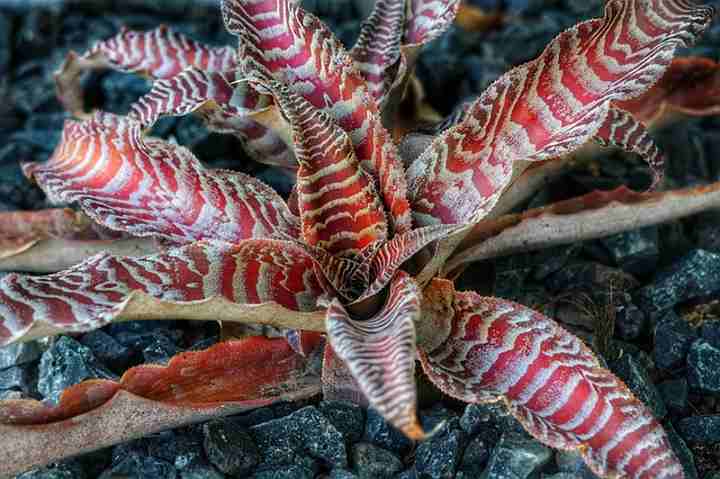
If you are looking for an unusual plant to create a centerpiece for your terrarium, then choose an ‘earth star.’ These easy to care for plants are notoriously slow-growers, and there some species that don’t grow very big. ‘Earth stars’ have ragged lanceolate leaves that grow in the shape of a star. They love high humidity, so they will grow better in a terrarium rather than a pot.
This beautiful type of bromeliad plant comes in variegated pink and green colors or dark red and purple.
Mini English Ivy (Hedera helix)

Miniature English ivy cultivars are ideal for terrariums because of their small size and ability to adapt to warm, humid environments. Being a type of creeping vine that enjoys low to medium light, English ivy will grow in almost any part of your enclosed glass jar. The miniature ivy cultivars have white and green leaves. You can grow this type of vine as bright ground cover or have it climbing the sides of your glass terrarium.
Spiderwort (Tradescantia)
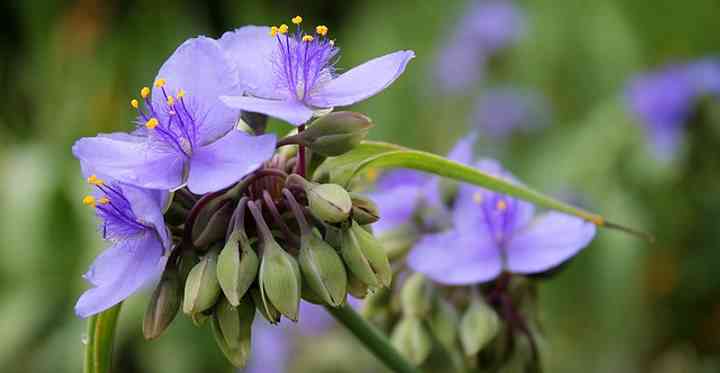
Spiderwort is a genus of ornamental flowering plants that grow well in indoor gardens. The miniature ecosystem in a closed terrarium allows various species of these trailing plants to thrive. Some types of spiderwort also produce white, pink, or purple flowers to brighten up your terrarium.
Strawberry Begonia (Saxifraga Stolonifera)
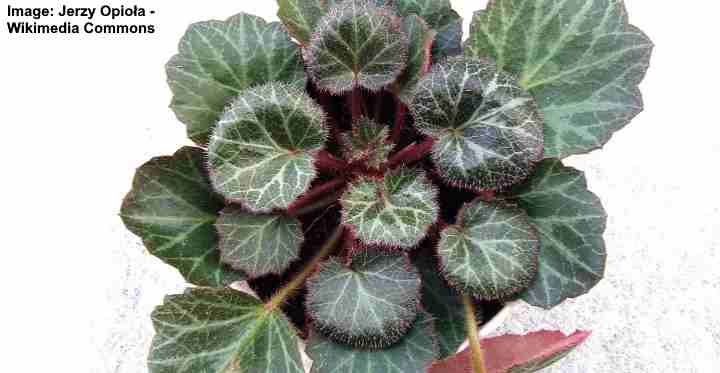
Strawberry begonias are ideal terrarium plants because they don’t grow taller than 8” (20 cm). The large green leaves with white veins look like begonia leaves, and the plant grows like strawberry runners. However, this species of plant is not related to begonias or strawberries.
In the closed, humid environment of a terrarium, strawberry begonias quickly cover the ground with attractive foliage. You can also regularly prune trailing stems to encourage bushier growth. All the factors of an enclosed terrarium—high humidity, medium to low light, warmth, and moist soil—are ideal for strawberry begonias.
Venus Flytrap (Dionaea muscipula)
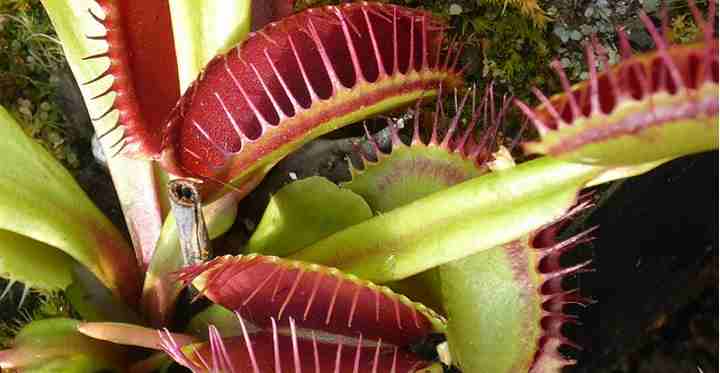
To turn your indoor closed terrarium into a genuinely tropical garden, add a carnivorous plant such as a Venus flytrap. These ‘hungry’ plants need plenty of humidity and moist soil to thrive. Their need for moisture is one reason why it’s easier to grow these exotic plants in a closed terrarium rather than in a pot.
Growing a Venus flytrap in a closed terrarium is not for beginners. It’s vital to have extra gravel under the plant to ensure additional drainage. You will also need to put some small flies into the terrarium every so often to feed the plant.
Miniature Orchids

Grow miniature orchids in your closed terrarium if you want beautiful exotic floral displays. Many types of orchids naturally grow in warm, humid environments where they get constant moisture. Orchids are a type of epiphytic plant, meaning they absorb moisture and nutrients through their roots.
The easiest type of orchid for your closed terrarium will be a miniature phalaenopsis or miniature jewel orchid. The most important care tips for growing orchids in a closed terrarium is not to over-water them and keep the air warm and humid.
How to Create a Closed Terrarium
It is straightforward to get started and create a closed terrarium. You will need a suitable large glass container with a sealable lid. To create the ideal growing environment for terrarium plants, have a layer of pebbles at the bottom for drainage, then a layer of activated charcoal, then a layer of potting soil.
Plants should only be planted in the potting soil and no deeper. Once you have arranged the type of plants you want, you can add decorative pebbles or stones to enhance the look of your terrarium indoor garden.
Remember that a closed terrarium doesn’t require a lot of watering. Soil should be moist but not overly damp or soggy. When watering, only do so occasionally and add about a tablespoon or two, depending on the size of your container.
Related articles:
